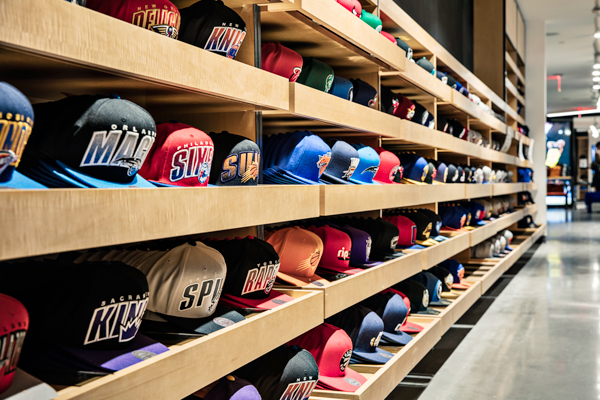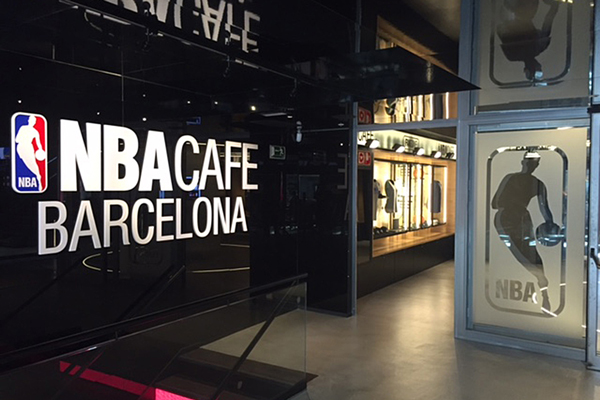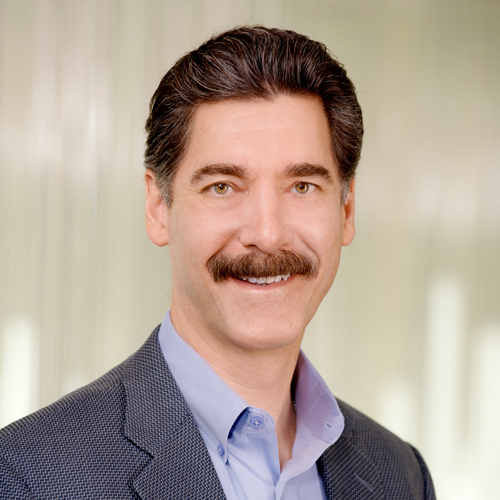The name National Basketball Association (NBA) might be developing into a misnomer. The future of the NBA isn’t just on a national stage. It’s on a global one.
The NBA has offices in 13 markets worldwide and is continuing to grow.
For Christopher Russo, the organization’s senior vice president of facilities and administration, that future exists in more than the players and teams—it exists in the buildings and facilities that support and showcase the NBA brand. Russo spoke with American Builders Quarterly, outlining recent projects that are integral to supporting the game and expanding the organization’s global vision and fan base going forward.
NBA Flagship Store
Location: New York, New York
Debut: December 2015
Construction duration: 18 months
The build-out of the flagship store within a 100-year-old, Fifth Avenue building in New York City was an important one, Russo says, for both the league and fans. The store is 25,000 square feet, houses the world’s largest in-store collection of NBA merchandise, includes 3,000 square feet of event space, is wired with the latest technology to improve the fans’ experience, and if that weren’t enough, is also LEED Gold-certified.
“One of the challenges in dealing with a single store and having such great content is trying to represent all 30 teams, and our other brands, in one space,” Russo says. “One way [we] overcame that was with the use of innovative technology throughout the space.”
Many of the project’s challenges arose from the building’s age and location: although the New York building is more than 100 years old and located in one of the busiest avenues in North America, the project team managed to design and integrate the latest in retail architecture for the facility.
Beyond the challenge of working with an aging structure in a high-traffic area in one of the world’s busiest cities, the design team also had to make sure that the store properly represented each of the league’s 30 franchises.
“That was a fantastic process, with the outcome being a retail platform that presents our brand and teams in the best way possible,” he says.
The NBA has had a retail presence on Fifth Avenue since 1998. When the opportunity came to reinvent the retail experience in a new location, Russo says that remaining on Fifth Avenue was important to the brand.
“Our new location continues to provide our global fan base, many of whom may never get to see a live NBA basketball game, the chance to experience the brand,” he says.

NBA Café Barcelona
Location: Barcelona, Spain
Debut: September 2016
Construction duration: 1 year
The café is a parternship between the NBA and AN Group, which operates restaurants in Spain. Russo says the goal of the build, like NBA’s other brand locations, is to provide another platform to engage with fans who don’t have the chance to experience a live game.
The restaurant is 4,000 square feet and features a menu that AN Group designed to complement the space, which televises live games and features memorabilia from around the league.
This project is unique, Russo says, because the menu and experience is tailored to its local setting. The NBA brand is prominent and important, but it’s part of an overall experience meant for a target audience—aimed to increase fan interaction with the brand in ways that are unique to the market.

NBA replay center
Location: Secaucus, New Jersey
Debut: 2015–16 season
Construction duration: 2 years
At the NBA Replay Center, officials review replays during games being played throughout the league. Russo says the goal of the project, which is located within the NBA’s Secaucus office, is to further assist referees in making the best calls possible.
“Through innovative design, we’ve provided a space with superior technology that provides seamless support to our referees and greater transparency for our fans,” he says. The center also connects to the league’s Twitter and Facebook accounts, both of which feature relevant links and updates on in-game action and statistics.
“It connects with fans of all ages,” Russo says.
He adds that the replay center is a step in the right direction in facets such as improving the NBA’s transparency, speeding up the game, and cutting down on review times by viewing replays in a central location via a high-speed network that’s connected to all arenas.
Building the center meant employing a large amount of technological know-how. The replay center utilizes nearly 100 monitors and 20 work stations, and it synchronizes video for each of the league’s 29 arenas throughout North America. Of course, the team rose to the occasion.
“Obviously there’s a technology and workload challenge,” Russo says. “But with a lot of input from our team owners and partners, it was a success.”
The Wisconsin Entertainment and Sports Center
Location: Milwaukee, Wisconsin
Debut: 2018–19 season
Construction duration: 2 years
As the name suggests, the Wisconsin Entertainment and Sports Center is for much more than sports, though it will be the new home of the Milwaukee Bucks and an anchor development for the city.
“There was an incredible commitment from ownership to engage the community,” Russo says. “They wanted to make sure the end results were representative of the Wisconsin area.”
The new arena will be directly north of the Bucks’ current arena, the Bradley Center, which will be demolished once construction is completed. Russo says the new arena is part of the vision of the Bucks’ ownership to transform 30 acres into a revitalizing entertainment destination in downtown Milwaukee.
Golden 1 Center
Location: Sacramento, California
Debut: October 2016
Construction duration: 4 years
The NBA Replay Center was a league- and owner-driven project, but the Golden 1 Center, which houses the Sacramento Kings, was driven by the team and city. The arena’s tagline is “Sacramento First,” and that promise carried through the entire development process.
“It’s a downtown project that brings the community together,” Russo says. “The project is a catalyst for revitalizing the downtown area and provides a new arena to an amazing fan base.”
The purpose of the center is to create an anchor piece in Sacramento’s downtown that combines a community environment with its state-of-the-art entertainment facility.
“It’s all about fan experience and that community effort,” Russo says.
In building the arena, the Kings ran into normal brick-and-mortar challenges such as site conditions and integrating the latest technology into the arena design. Still, the effort to overcome those challenges was worth it. The NBA and its teams are determined to keep each of its arenas state-of-the-art. In Sacramento, the league assisted the team in achieving a modern, NBA-compliant building in market that for years housed one of the oldest and smallest facilities in its portfolio.
“Development of the G1 Center was a critical component toward keeping the Kings in Sacramento,” Russo says. “The Kings and the entire development team truly delivered something that the league and Sacramento will be proud of.”
NBA Playzone in Shanghai
Location: Shanghai, China
Debut: June 2016
Construction duration: 9 months
Basketball is the number-one team sport in China, and the NBA is committed to growing that fan base by making its brand and teams accessible to international fans. The Playzone appeals to kids up to the age of 10, most of whom, Russo says, will probably never experience a live NBA game.
The Playzone features a one-third regulation-size court, digital interaction, and obstacle courses. Like the arenas, the Playzone is designed to be a community staple that draws in a variety of fans.
“It’s provided a great avenue for youth who don’t get the chance to experience an NBA game live,” Russo says. “Playzone provides an interactive NBA experience through various forms: digital interaction, a mascot training experience, and the arena where basketball fundamentals are taught—[all
of which] help promote a healthy lifestyle.”
By reaching out to youth, Russo and the league hope to create lifelong participants of the sport and increase the fan base of the league.
International development carries its own construction challenges, and many building best practices used in the United States don’t apply in China. Luckily, an active fan base and a Chinese consultant helped Russo guide the project from sketches to a new building.
“This is another way to generate different avenues for our fans to engage with the brand, and we’re growing that base internationally,” Russo says of his motivation to pursue the project.



